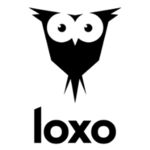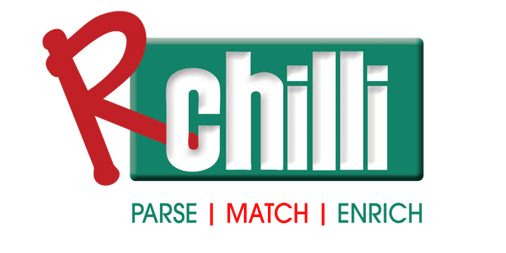Description

Candidate.ID

Loxo
Comprehensive Overview: Candidate.ID vs Loxo
Candidate.ID and Loxo are two popular recruitment technology platforms used by organizations to optimize their talent acquisition processes. They cater to various markets, including recruiting agencies, corporate HR departments, and staffing firms. Here's an overview of each platform, focusing on their primary functions, target markets, market share, user base, and key differentiating factors:
Candidate.ID
a) Primary Functions and Target Markets
- Primary Functions: Candidate.ID is known for its talent pipeline automation capabilities. It focuses on nurturing candidates through automated workflows and personalized email campaigns. The platform helps recruiters engage with passive candidates, enabling ongoing communication until the candidate is ready for active recruitment. The key features include candidate scoring, pipeline segmentation, automated communication, and analytics for measuring candidate engagement.
- Target Markets: Candidate.ID targets mid to large-sized enterprises that require advanced talent acquisition solutions. Its automation features make it particularly useful for industries with long recruitment cycles and those with a strategic approach to future talent needs.
b) Market Share and User Base
- Market Share and User Base: Candidate.ID is a niche player compared to some larger talent acquisition platforms, with a specialized focus on candidate nurturing and engagement. It appeals mostly to organizations that are looking for innovative ways to improve candidate engagement rather than traditional applicant tracking.
c) Key Differentiating Factors
- Automation Focus: Candidate.ID stands out for its robust automation features designed specifically for candidate engagement and nurturing.
- Candidate Scoring: Provides advanced features like candidate scoring to help prioritize recruitment efforts based on engagement levels and likelihood of conversion.
Loxo
a) Primary Functions and Target Markets
- Primary Functions: Loxo is an all-in-one talent intelligence platform that offers applicant tracking, customer relationship management (CRM), and artificial intelligence-driven sourcing tools. Its features include a comprehensive database of candidate profiles, automated sourcing, recruitment marketing, and integrated communication tools.
- Target Markets: Loxo serves a broad clientele, including small to large recruitment agencies, internal corporate HR teams, and RPOs (Recruitment Process Outsourcing). It aims to streamline the recruiting process from sourcing to hiring.
b) Market Share and User Base
- Market Share and User Base: Loxo has a wider market presence compared to Candidate.ID, owing to its comprehensive suite of recruitment tools that cater to various aspects of the recruitment process. It attracts a diverse range of users, from small businesses to large enterprises, due to its scalability and integration capabilities.
c) Key Differentiating Factors
- Comprehensive Suite: Unlike Candidate.ID's focus on candidate nurturing, Loxo provides a holistic recruitment platform that includes ATS, CRM, and AI-driven sourcing.
- AI Capabilities: Loxo leverages artificial intelligence to enhance its sourcing and recruitment marketing efforts, allowing for more efficient candidate matching and pipeline management.
Conclusion
Both Candidate.ID and Loxo offer distinct value propositions within the talent acquisition space. Candidate.ID specializes in candidate engagement through automation and nurturing, making it ideal for organizations focusing on long-term talent pipelines. Loxo, with its AI-driven and comprehensive approach to recruiting, appeals to organizations looking for an end-to-end solution that covers the entire recruitment process. Their differing focuses and features cater to the unique needs of various organizations within the recruitment and HR landscapes.
Contact Info

Year founded :
Not Available
Not Available
Not Available
Not Available
Not Available

Year founded :
2021
Not Available
Not Available
Switzerland
Not Available
Feature Similarity Breakdown: Candidate.ID, Loxo
Certainly! Below is a feature similarity breakdown for Candidate.ID and Loxo, two recruitment and candidate engagement platforms.
a) Core Features in Common
-
Candidate Management:
- Both platforms offer robust tools for managing candidate profiles, tracking their status throughout the recruitment pipeline, and organizing candidate data.
-
Automated Engagement:
- Automated workflows for engaging candidates through email and other communication channels are commonplace for both systems, allowing recruiters to nurture relationships with potential candidates.
-
Talent Sourcing:
- Both Candidate.ID and Loxo provide features to source candidates through various channels, including integration with social media and job boards.
-
Analytics and Reporting:
- Advanced analytics to track engagement metrics, candidate data, and recruitment ROI are integral features that both platforms emphasize.
-
Integration Capabilities:
- Both platforms offer integration with other HR and recruitment tools, enhancing their capability to fit into existing tech stacks seamlessly.
b) User Interface Comparison
-
Candidate.ID:
- Known for its user-friendly interface that focuses on candidate pipelines and engagement metrics. The dashboard is typically designed to highlight key engagement statistics and workflows, allowing recruiters to visualize the entire candidate journey.
-
Loxo:
- Loxo's interface is typically clean and intuitive, with a greater emphasis on CRM-like functionalities. It’s built to streamline recruitment processes, with a focus on ease of navigation through different stages of recruiting, sourcing, and applicant tracking.
While both interfaces prioritize user-friendliness, Candidate.ID may be more tailored towards engagement analytics, whereas Loxo offers a CRM-focused experience.
c) Unique Features
-
Candidate.ID:
- Candidate Scoring: Offers proprietary candidate scoring to prioritize leads based on engagement levels and fit, which helps recruiters focus their efforts on the most promising candidates.
- Engagement Funnel Visualization: Unique visualization tools that help recruiters understand and optimize the engagement funnel more effectively.
-
Loxo:
- AI Sourcing: Loxo uses artificial intelligence to source candidates, automating part of the talent search process to help recruiters build more comprehensive talent pipelines quickly.
- CRM Functionality: It includes built-in CRM capabilities, differentiating it from Candidate.ID with a stronger focus on overall relationship management beyond candidate engagement.
These differences highlight how Candidate.ID leans more towards nurturing and engagement analytics, while Loxo offers a more comprehensive recruitment CRM and sourcing automation toolset.
Features

Not Available

Not Available
Best Fit Use Cases: Candidate.ID, Loxo
Candidate.ID and Loxo are both recruitment technologies that serve different purposes within the talent acquisition and recruitment marketing landscape. They each have their strengths and best-fit use cases depending on the needs of a business or project. Here’s how they can be effectively used:
Candidate.ID
a) Best Fit Use Cases:
-
Types of Businesses or Projects:
- Large Enterprises: Candidate.ID is especially beneficial for large enterprises with extensive recruitment needs. Companies with high-volume hiring and talent pools can leverage its capabilities to manage candidates effectively.
- Talent Communities: Organizations that maintain large talent communities or have passive candidate pools can use Candidate.ID to nurture relationships over time, ensuring a warm talent pool when active hiring begins.
- Industries with Long Hiring Cycles: Sectors like engineering, healthcare, or tech that may have longer lead times from candidate application to hire can benefit from Candidate.ID’s nurturing capabilities.
-
Scenarios:
- Recruitment Marketing: When the primary need is to engage and nurture candidates over time through targeted recruitment marketing campaigns.
- Improving Candidate Experience: Businesses looking to enhance candidate experience and streamline communication through automated nurturing.
d) Industry Verticals or Company Sizes:
- Industry Verticals: Ideal for industries with hard-to-fill roles where cultivating long-term relationships is crucial, such as healthcare, technology, and engineering.
- Company Sizes: Best suited for mid-to-large size companies with mature HR functions and a focus on employer branding and candidate experience improvements.
Loxo
b) Preferred Use Cases:
-
Types of Businesses or Projects:
- Recruitment Agencies: Loxo is an excellent tool for recruitment agencies or staffing firms that need a robust CRM/tracker to manage a large number of candidates and clients efficiently.
- Growing Companies: Companies experiencing rapid growth and needing to scale their recruiting efforts, especially in competitive talent markets.
-
Scenarios:
- Full Lifecycle Recruiting: When comprehensive ATS/CRM functionality is needed to track and manage candidates throughout the entire recruitment process.
- Sourcing and AI-Driven Recruiting: For organizations looking to leverage AI technology to improve sourcing and candidate matching efficiency.
d) Industry Verticals or Company Sizes:
- Industry Verticals: Highly effective for recruitment and staffing firms, as well as dynamic industries needing quick and effective hiring processes such as startups, tech firms, and sales-oriented businesses.
- Company Sizes: Suitable for small to medium-sized companies that are expanding rapidly or need sophisticated sourcing tools without the complexity of larger enterprise systems.
Both Candidate.ID and Loxo offer unique tools and functionalities, and the choice between them would largely depend on the specific requirements around candidate engagement, the need for CRM/ATS integration, and the scale of the organization’s hiring needs.
Pricing

Pricing Not Available

Pricing Not Available
Metrics History
Metrics History
Comparing undefined across companies
Conclusion & Final Verdict: Candidate.ID vs Loxo
To provide a conclusion and final verdict for the comparison between Candidate.ID and Loxo, let's break down the analysis into the requested components:
a) Considering all factors, which product offers the best overall value?
Overall Value Verdict:
Determining the best overall value depends on the specific needs and priorities of the user. However, generally speaking:
-
Candidate.ID might offer better value if the primary focus is on sophisticated candidate engagement, lead scoring, and nurturing active and passive candidates over time. It is particularly useful for organizations that value deep insights into candidate behavior and engagement.
-
Loxo, on the other hand, could be considered the better value if the organization requires a more comprehensive, end-to-end talent acquisition platform. Loxo offers features like AI-powered recruiting, sourcing, and CRM capabilities in one platform, which can streamline the recruitment process significantly.
b) What are the pros and cons of choosing each of these products?
Candidate.ID:
- Pros:
- Advanced candidate engagement and lead scoring functionalities.
- Ability to nurture candidates over time with personalized email marketing.
- Detailed insights into candidate behavior, which helps in targeting candidates more effectively.
- Cons:
- May lack broader recruiting and sourcing features compared to more comprehensive platforms.
- Potential integration challenges with other recruitment tools if they are already in place.
- Might be an overinvestment for companies with straightforward recruiting processes or less emphasis on engagement metrics.
Loxo:
- Pros:
- Combines sourcing, recruiting CRM, and ATS in one platform.
- Incorporates AI technology for smarter candidate matching and sourcing.
- User-friendly interface that reduces the learning curve for recruiters.
- Cons:
- May offer too many features for organizations focused strictly on candidate nurturing and engagement.
- Larger or highly specialized enterprises might require more customization than Loxo currently allows.
- Cost considerations if the additional features are not fully utilized by the organization.
c) Are there any specific recommendations for users trying to decide between Candidate.ID vs Loxo?
Recommendations:
-
Assess Organizational Needs:
- If your organization prioritizes a robust engagement strategy with candidates and values detailed behavioral insights, Candidate.ID may be more suitable.
- For a more integrated approach to handling end-to-end recruitment processes, including sourcing, tracking, and engagement, Loxo might be the better choice.
-
Budget Considerations:
- Evaluate which platform offers features that align most closely with your budget. While both tools offer unique advantages, it’s essential to ensure that the chosen product's capabilities justify the investment.
-
Scalability and Growth:
- Consider future growth and scalability. Loxo might be more adaptable for larger teams or growing recruitment needs due to its comprehensive nature. Candidate.ID might be perfect for teams looking to scale their engagement strategies specifically.
-
Integration and Compatibility:
- Look at how each product integrates with your current tech stack. Systems that easily integrate with existing tools can enhance productivity and reduce transition challenges.
-
Trial and Feedback:
- If possible, conduct a trial of both platforms. Gather feedback from recruiters and team members who will use the system daily to understand their usability preferences.
In conclusion, the best choice between Candidate.ID and Loxo ultimately hinges on your specific recruitment needs, organizational goals, and the value you place on features like engagement analytics versus a comprehensive recruitment suite.
Add to compare
Add similar companies




